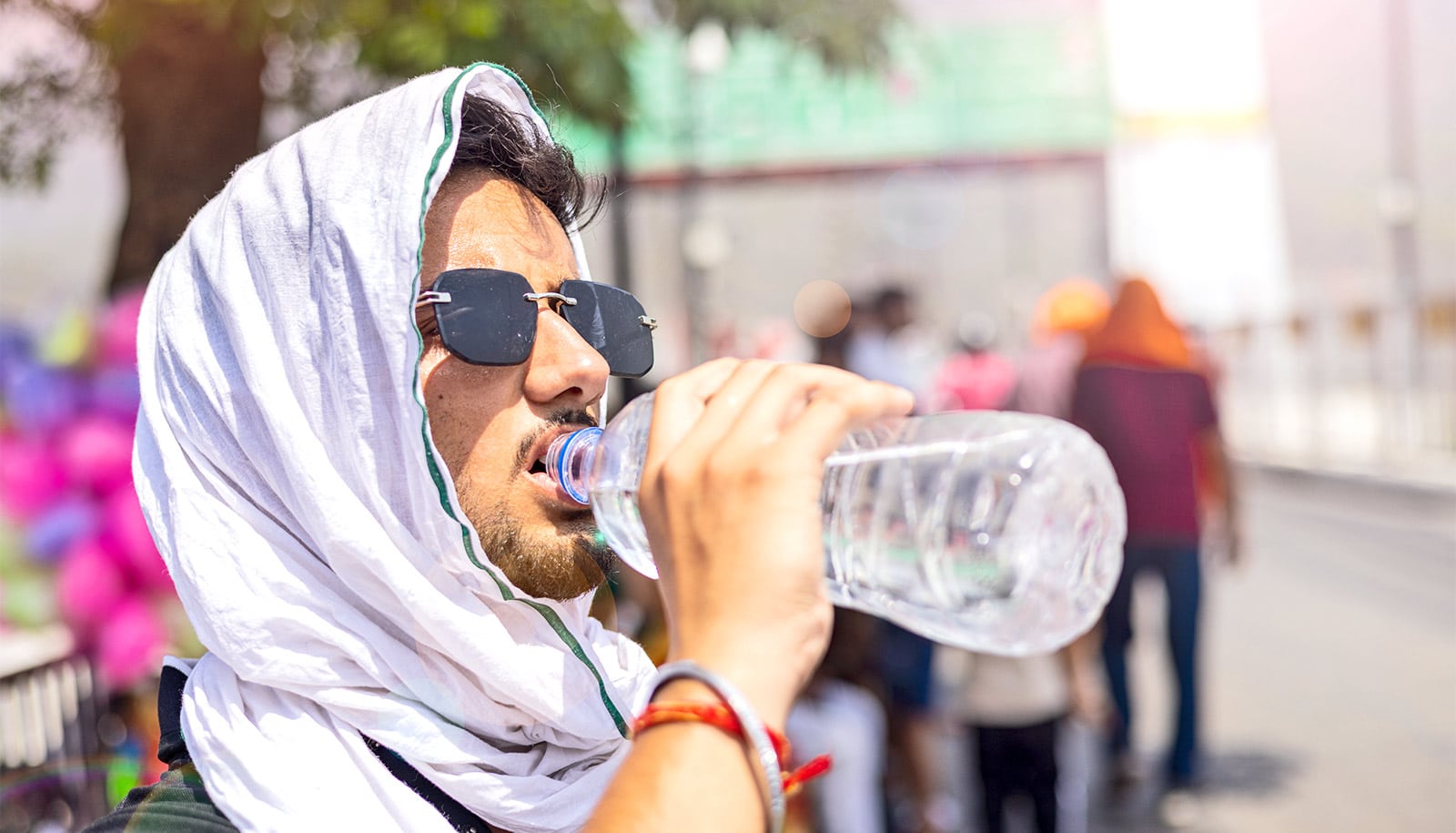Researchers say more hot days put an additional 250 million older people at risk as climate change accelerates.
If you’re reading this, congratulations—you survived the world’s hottest day ever recorded.
On Monday, July 22, 2024, the daily global average temperature soared to a record-setting 62.87 degrees Fahrenheit (17.15 degrees C). This happened only days after heat waves scorched much of the United States—including Massachusetts—and western Europe, putting hundreds of millions of people in danger.
Compared to more visible climate change-fueled disasters, like flooding and hurricanes, heat is an invisible threat. But excessively hot temperatures have real physical effects on the body, including lowering blood pressure due to blood vessels dilating, dehydration from sweating more, and kidney damage. About 489,000 people globally are killed by extreme heat each year, with people over 65 years old at the highest risk.
As global temperatures rise, the population of older adults who are vulnerable to the heat is also rising: the population 60 years and older worldwide is expected to double to 2.1 billion by 2050.
In a recent paper, Boston University economist and climate expert Ian Sue Wing and sociologist Deborah Carr found that compared to the present day, an additional 250 million older adults will be chronically exposed to dangerously high temperatures by 2050 as a result of the climate crisis and global aging trends.
Their results appear in Nature Communications.
By combining their expertise in population health and climate modeling, they brought together two entirely different sets of data—demographics and climate forecasts—to see where older populations are more at risk of worsening heat in the coming decades.
“We’re seeing where people live, how fast the population is aging, and climate projections, allowing us to find this overlap,” says Sue Wing, a professor of Earth and environment.
In the next three decades, they concluded, more than 23% of people over the age of 69 will be living in regions where temperatures will routinely surpass 99.5 degrees F (37.5 degrees C). Countries in Asia and Africa, including India, Pakistan, China, Nigeria, and Sudan, will endure some of the most severe effects, according to their analysis. The United States and Mexico are also projected to have more days of increased heat bearing down on their aging populations.
“Heat affects older adults in a lot of ways that are different from young people,” says Carr, a CAS professor of sociology. “One main reason is that older people have more underlying health conditions. If you already have heart problems, for instance, that might put you at higher risk of heat stroke or heat exhaustion.”
Medications for different kinds of health conditions, Carr says, can also be dehydrating or inhibit sweating, making it difficult for the body to thermoregulate. Plus, not everyone has equal access to the resources needed to weather the heat—a phenomenon called aging inequality. For example, having unstable housing, a lower income, being socially isolated, and many other factors, put some people at greater risk of the negative health impacts from the heat.
“A good share of older adults, especially older women, are impoverished for a whole realm of reasons,” Carr says. “What that means is that maybe they can’t afford air-conditioning, or maybe they have a window air conditioner unit that they can’t physically put in. All the challenges that any of us deal with on a daily basis to manage heat will be much harder when you have no money, or perhaps limited upper body strength, or difficulty breathing, or cognitive issues. It’s a perfect storm of risk.”
Scientists have found that periods of unusually hot days are occurring more frequently and for longer durations since the mid-20th century. This is due to a record-breaking amount of heat-trapping gasses like carbon dioxide and methane—that come from extracting and burning fossil fuels—entering the atmosphere and oceans, accelerating the effects of climate change. Still, older adults deciding to retire often move to a warmer climate—the classic New England “snowbirds” who vacation or retire in the warmer southern states—without realizing how many more days of extreme heat they’ll be exposed to.
“People move to areas that are warmer in the current climate, but don’t anticipate how much hotter those climates will become when their age is going to really advance,” says Sue Wing. “They’re going to be subject to more of those challenges.”
Sue Wing and Carr are continuing to study the impacts of climate change and aging, and hope their heat risk assessments can inform public health decisions about where to invest in preventive measures, like community cooling centers and green spaces that provide shade.
“This phenomenon doesn’t have a one-size-fits-all solution,” Sue Wing says. In the paper, the researchers call for leaders in both climate change and healthy aging policy to work together to integrate climate preparedness and health care initiatives to protect people at the highest risk.
“For interventions on the small scale, could there be subsidies for air conditioners for older people? Could there be more cooling centers? Could we train first responders, social workers, and residents to check in on their neighbors?” Carr says. “But, at the largest scale, we need climate mitigation efforts to reduce carbon emissions. We need to vote and think about our leaders’ political will to act.”
This work was funded by the US Department of Energy.
Source: Boston University



